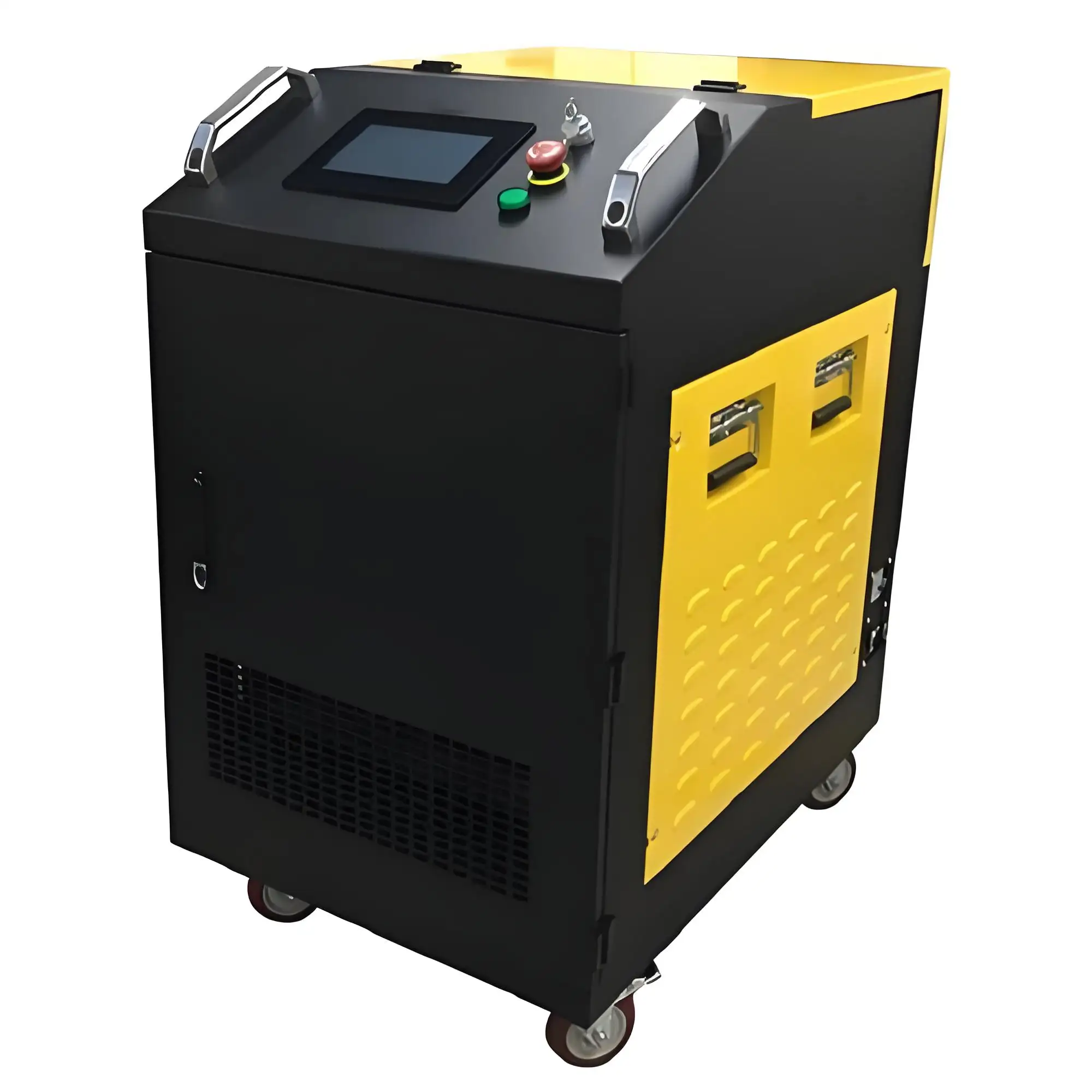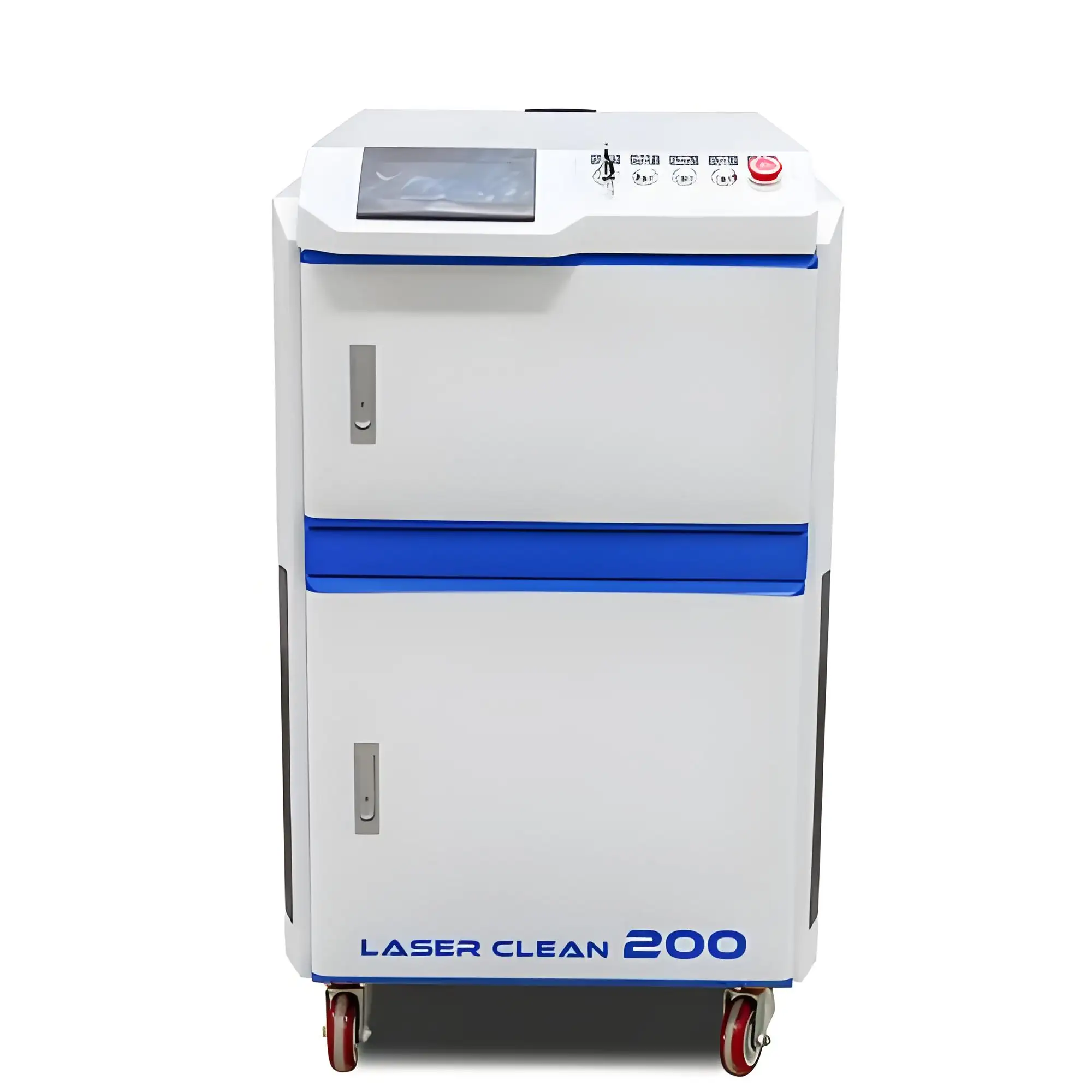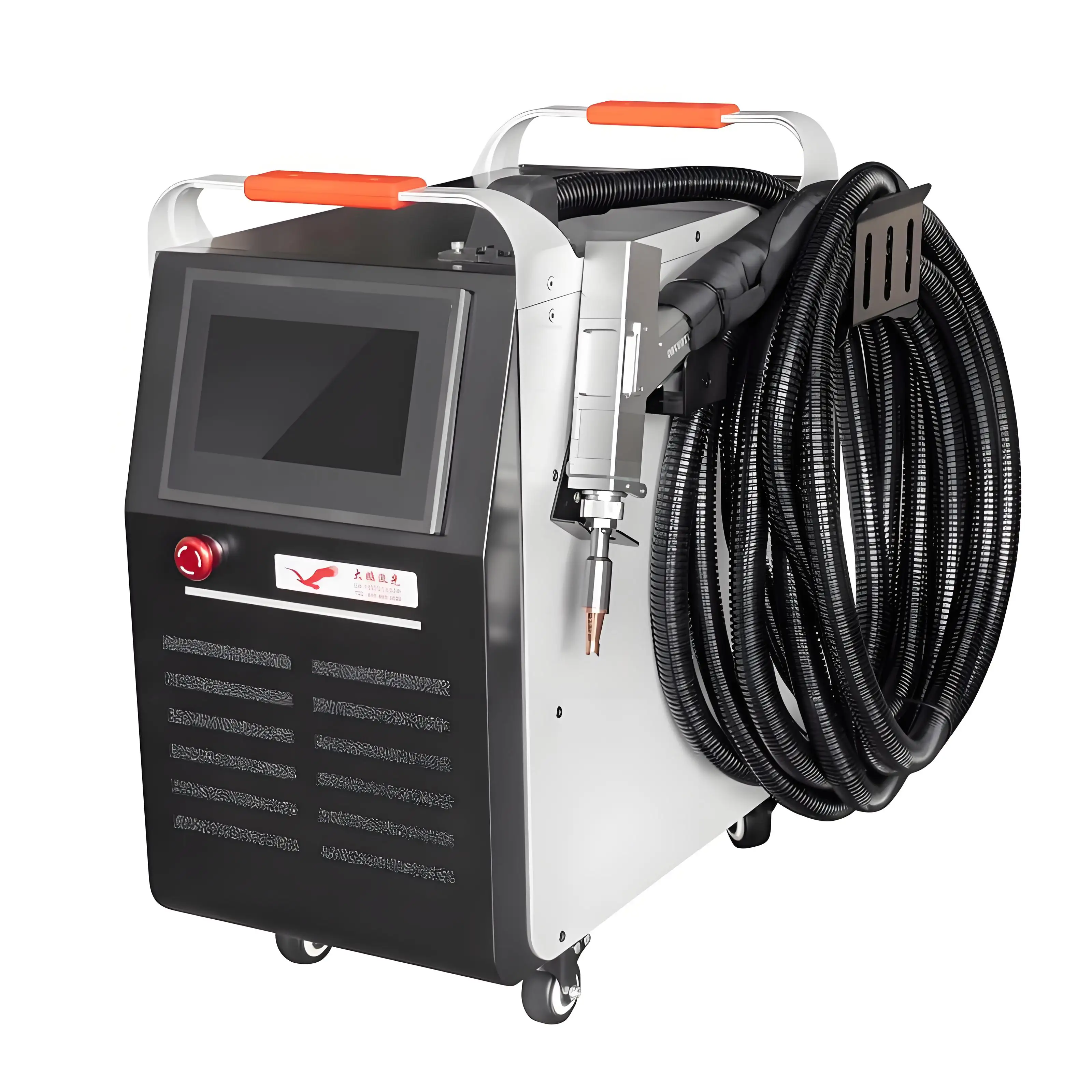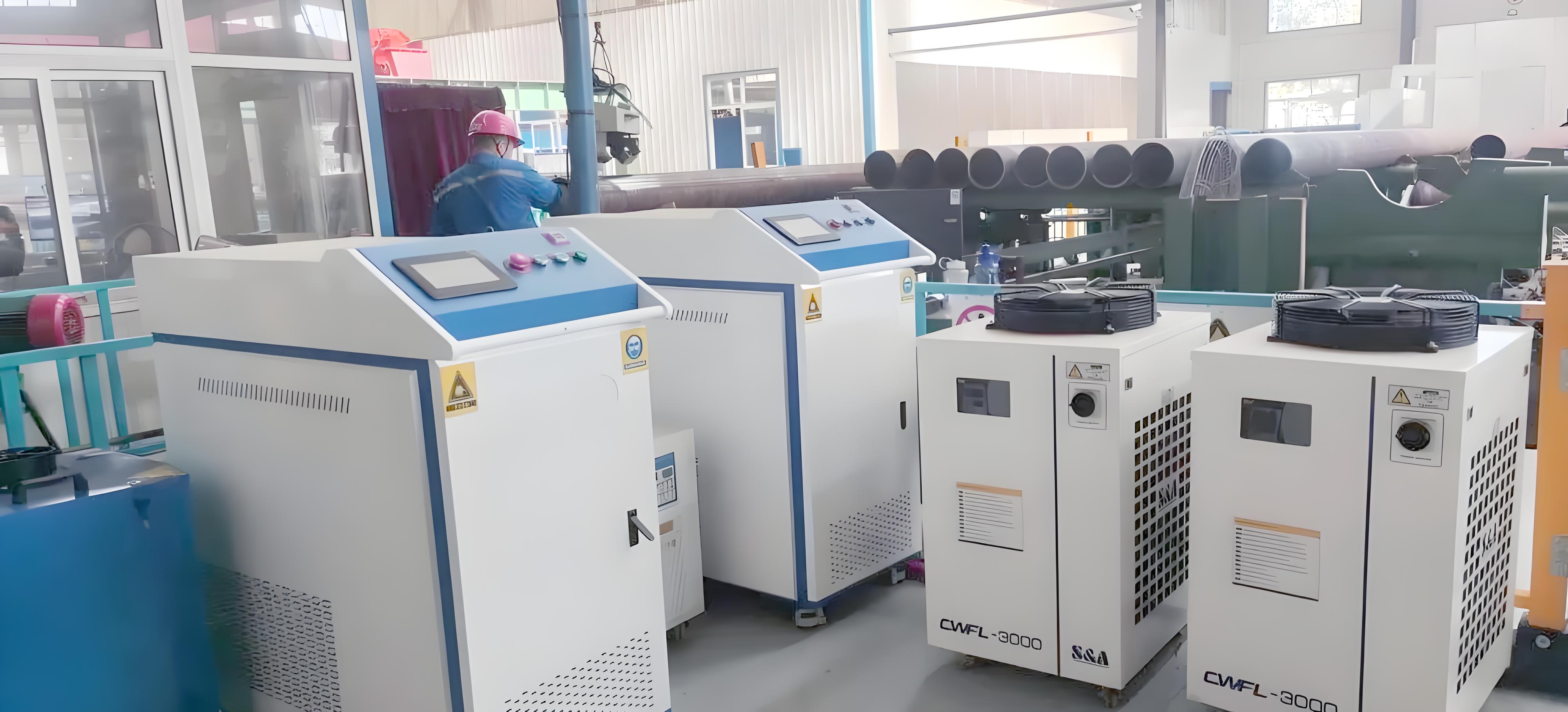Having spent over a decade in the industrial laser equipment industry, I’ve had the privilege of working with some of the most advanced laser rust removal machines on the market. These tools have transformed how industries like manufacturing, automotive, and shipbuilding tackle corrosion, offering a precise, eco-friendly alternative to traditional methods like sandblasting. One question I often get from clients is how these machines achieve precise positioning to target rust without damaging the underlying material. It’s a critical feature, especially when working on delicate components or complex surfaces. Drawing from my years of installing, testing, and troubleshooting these systems, I’ll walk you through the technologies and techniques behind precise positioning in laser rust removal, their benefits, challenges, and how to ensure accuracy in your operations.

The Importance of Precise Positioning in Laser Rust Removal
Laser rust removal machines use high-powered lasers to vaporize rust, paint, or contaminants from metal surfaces. The laser beam is incredibly focused—often just millimeters wide—so even a slight misalignment can lead to missed spots or unintended damage. In industries like aerospace or railway maintenance, where precision is non-negotiable, accurate positioning ensures the laser hits only the rusted areas, preserving the integrity of the material beneath.
I remember a project with an aerospace client who needed to clean rust from turbine blades. The parts were intricate, with tight tolerances, and any error could ruin expensive components. The precise positioning of their Laserax Shotblast system was a game-changer, allowing them to clean complex geometries without a hitch. Let’s explore how these machines achieve such accuracy.
Technologies Behind Precise Positioning
Laser rust removal machines rely on a combination of advanced hardware and software to ensure pinpoint accuracy. Here’s a breakdown of the key technologies I’ve seen in action:
1. Galvanometer Scanning Systems
Most laser rust removal machines use galvanometer mirrors (or galvo scanners) to direct the laser beam. These mirrors are controlled by high-speed motors that adjust the beam’s position with incredible precision, often within micrometers. The galvo system scans the surface in pre-programmed patterns, like spirals or grids, to cover the target area evenly.
In my experience, galvo scanners are the backbone of precision in handheld and stationary laser cleaners. For example, the P-Laser QF-1000 uses a galvo system to achieve a scanning accuracy of 0.01 mm, making it ideal for intricate parts like engine components.
2. 3D Vision and Laser Scanning
For complex or irregular surfaces, 3D vision systems are a game-changer. These systems use cameras or laser sensors to create a digital map of the workpiece, identifying rusted areas and surface contours. The laser then adjusts its path in real-time to follow the mapped surface, ensuring precise targeting.
I worked with a shipyard that used a CleanTech LPC-2000 with 3D vision to clean rusted hull sections. The system scanned the curved surfaces and adjusted the laser’s focus automatically, saving hours compared to manual positioning.

3. CNC and Robotic Integration
For automated setups, laser rust removal machines are often mounted on CNC machines or robotic arms. These systems use pre-programmed coordinates or real-time feedback to move the laser head with sub-millimeter accuracy. Robotic arms, like those from FANUC or KUKA, are especially effective for large or complex workpieces, such as railway tracks or heavy machinery.
A client in automotive manufacturing integrated a Laserax system with a robotic arm to clean engine blocks. The arm’s 6-axis movement allowed the laser to navigate tight corners, achieving consistent results across thousands of parts.
4. Software-Controlled Beam Adjustment
Advanced software interfaces allow operators to fine-tune the laser’s position, power, and scanning pattern. Modern machines come with touchscreen controls or PC-based software that let users input precise coordinates or select target areas on a digital interface. Some systems, like those from IPG Photonics, offer real-time feedback, adjusting the beam based on surface conditions.
I’ve seen operators use software to set custom cleaning patterns for specific tasks, like cleaning only the rusted seams of a welded structure, leaving the rest untouched.
5. Autofocus and Distance Sensors
To maintain optimal focal length, many laser cleaners use autofocus systems or distance sensors. These measure the distance between the laser head and the surface, adjusting the beam’s focus to ensure maximum effectiveness. This is critical for uneven surfaces, where manual focusing would be impractical.
A restoration company I consulted for used a P-Laser autofocusing unit to clean antique machinery. The system automatically adjusted for varying surface heights, ensuring consistent rust removal without damaging delicate parts.
Benefits of Precise Positioning
The ability to achieve precise positioning makes laser rust removal machines a powerful tool for industrial applications. Here’s why it matters:
Enhanced Accuracy
Sub-millimeter precision ensures the laser targets only rust or contaminants, preserving the underlying material. This is critical for safety-critical components like aircraft parts or rail fasteners, where damage could lead to failure.

Increased Efficiency
Precise positioning reduces the need for multiple passes, speeding up the cleaning process. A client in the railway industry told me their automated laser system cut track maintenance time by 40% compared to manual grinding.
Reduced Material Waste
Unlike abrasive methods, lasers don’t remove healthy material, extending the lifespan of components. This is especially valuable for expensive assets like train axles or bridge girders.
Versatility Across Complex Surfaces
3D vision and robotic systems allow lasers to handle intricate or curved surfaces, from turbine blades to railcar chassis, with consistent results.
Improved Safety
Precise targeting minimizes the risk of stray laser beams, which is crucial in busy work environments. Safety interlocks and enclosed systems further enhance operator safety.
Challenges of Achieving Precise Positioning
While the technology is impressive, there are hurdles to overcome:
1. High Initial Costs
Systems with 3D vision or robotic integration are expensive, often costing $50,000–$150,000 or more. Smaller operations may struggle to justify the investment. I’ve seen clients opt for semi-automated systems to balance cost and precision.
2. Complex Setup and Calibration
Setting up CNC or robotic systems requires expertise. Calibrating 3D vision or galvo scanners can take days, and errors can lead to inaccurate cleaning. I’ve spent hours helping clients fine-tune their systems to achieve optimal results.
3. Surface Variability
Irregular surfaces or heavy rust can challenge even advanced systems. For example, thick rust layers may require multiple passes, and non-uniform shapes may need manual adjustments. A restoration project I worked on required constant tweaking for heavily corroded parts.

4. Operator Training
Achieving precise positioning requires trained operators who understand the software and hardware. Misconfigured settings can lead to missed spots or damage. I recommend thorough training sessions to ensure proficiency.
5. Environmental Factors
Dust, vibrations, or poor lighting can interfere with vision systems or sensors, affecting accuracy. I’ve seen clients install enclosed workstations to create stable conditions for laser cleaning.
Comparison Table of Positioning Technologies
Here’s a table summarizing the key technologies for precise positioning in laser rust removal:
|
Technology |
Description |
Benefits |
Challenges |
|---|---|---|---|
|
Galvo Scanners |
Mirrors direct laser in precise patterns |
High accuracy, fast scanning |
Limited to small areas, needs calibration |
|
3D Vision Systems |
Maps surfaces, adjusts laser path |
Handles complex shapes, real-time adjustments |
Expensive, sensitive to environmental factors |
|
Robotic Integration |
Laser on robotic arm, programmed paths |
Versatile, fully automated |
High cost, complex setup |
|
Autofocus Sensors |
Adjusts focal length for uneven surfaces |
Consistent results, easy to use |
May struggle with extreme variations |
This table highlights the strengths and trade-offs of each approach, but let’s look at how they work in practice.
Real-World Examples of Precise Positioning
I’ve seen precise positioning make a difference in various industries. Here are two examples from my experience:
Aerospace Maintenance: A client used a Laserax Shotblast with 3D vision to clean rust from aircraft landing gear. The system mapped the gear’s complex geometry and adjusted the laser’s path in real-time, achieving 0.02 mm accuracy. This precision preserved the gear’s surface, critical for safety compliance.
Shipbuilding: A shipyard integrated a CleanTech LPC-1500 with a robotic arm to clean rusted hull plates. The arm followed pre-programmed paths, cleaning welds with sub-millimeter precision. The setup saved hours compared to manual blasting, though the initial investment was significant.
These cases show that precise positioning can transform workflows, but it requires the right technology and planning.

How to Ensure Precise Positioning in Your Operation
If you’re considering a laser rust removal machine and need precise positioning, here’s how to set yourself up for success:
1. Choose the Right Machine
Select a machine with advanced positioning features, like galvo scanners, 3D vision, or robotic compatibility. Brands like Laserax, P-Laser, CleanTech, and IPG Photonics offer systems tailored for precision. For example, the P-Laser QF-2000 is known for its high-accuracy galvo system.
2. Invest in Automation
For maximum precision, consider robotic arms or CNC integration. These systems are ideal for high-volume or complex tasks but require a higher budget. Work with suppliers who offer turnkey automation solutions.
3. Train Your Team
Ensure operators are trained in software programming and system calibration. Most suppliers provide on-site training or online modules. I’ve found that hands-on practice is key to mastering precise settings.
4. Optimize the Work Environment
Minimize dust, vibrations, and poor lighting to ensure vision systems and sensors perform well. For field work, use portable enclosures to create stable conditions.
5. Regular Maintenance
Keep optics, sensors, and galvo mirrors clean to maintain accuracy. A preventive maintenance contract with your supplier can catch issues like lens misalignment early.
6. Test and Calibrate
Before full-scale use, test the system on sample parts to fine-tune scanning patterns and focal lengths. I’ve helped clients run test cycles to ensure their setups meet precision requirements.

The Future of Precise Positioning in Laser Rust Removal
The push for precise positioning is driving innovation in laser rust removal. Emerging technologies like AI-driven vision systems and machine learning are making machines smarter, allowing them to adapt to surface variations in real-time. I recently spoke with a supplier developing self-calibrating lasers that adjust positioning without human input, which could revolutionize industries like aerospace and railways.
As these technologies become more affordable, I expect precise positioning to become standard, even for smaller operations. For now, businesses can achieve high accuracy with existing systems by choosing the right setup and investing in training.
Wrapping Up
Laser rust removal machines achieve precise positioning through galvanometer scanners, 3D vision systems, robotic integration, software controls, and autofocus sensors. These technologies deliver sub-millimeter accuracy, efficiency, and versatility, making them ideal for industries requiring precision, like aerospace or railways. However, challenges like high costs, complex setup, and environmental factors require careful planning.
From my years in the industry, I’ve seen how precise positioning can transform maintenance workflows, saving time and protecting valuable assets. Whether you’re cleaning intricate parts or large structures, choosing a machine with the right features and ensuring proper training will set you up for success. If you’re ready to explore laser rust removal, prioritize precision and work with a reputable supplier to get the most out of this cutting-edge technology.

Related Questions and Answers
Q: Can laser rust removal machines achieve precise positioning on curved surfaces?
A: Yes, 3D vision systems and robotic arms allow lasers to follow curved or irregular surfaces with sub-millimeter accuracy. Calibration is key for consistent results.
Q: How much does a laser rust removal machine with precise positioning cost?
A: Prices range from $20,000 for basic units with galvo scanners to $100,000+ for robotic or 3D vision systems. Leasing options can help manage costs.
Q: Do operators need special skills for precise laser positioning?
A: Yes, operators need training in software programming and system calibration. Most suppliers offer training programs to ensure proficiency.
Q: How do environmental factors affect laser positioning accuracy?
A: Dust, vibrations, or poor lighting can interfere with vision systems or sensors. Using enclosed workstations or portable shields helps maintain accuracy.






